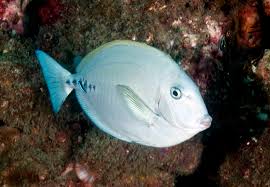
Dragon tattoos have been an enduring symbol in body art across cultures, representing strength, wisdom, power, and mysticism. Among them, Chinese and Japanese dragons hold a special place in tattoo traditions, carrying deep-rooted meanings tied to spirituality, protection, and transformation. In recent years, modern tattoo styles have embraced new interpretations of dragon imagery, blending traditional designs with contemporary aesthetics.
This article explores:
- The historical significance of dragon tattoos in Asian cultures.
- Traditional dragon tattoo styles and their meanings.
- How modern trends and Western influences have reshaped dragon tattoos.
- The popularity of dragon tattoos in celebrities and pop culture.
- The future of dragon tattoos in digital and AI-driven tattooing.
1. The History and Cultural Significance of Dragon Tattoos
1.1. The Dragon in Chinese Mythology and Tattoo Art
In Chinese culture, dragons (龙, Lóng) are revered as celestial beings that:
- Symbolize power, good fortune, and wisdom.
- Represent the emperor and divine authority.
- Are associated with the Five Elements (wood, fire, earth, metal, water) and Yin-Yang balance.
Historically, Chinese dragon tattoos were worn by:
- Martial artists to represent inner strength and discipline.
- Fishermen and sailors to invoke protection from the sea.
- Rebels or underground figures, marking resistance and defiance against authority.
1.2. The Influence of Japanese Irezumi on Dragon Tattoos
Japanese dragon tattoos, or Irezumi (入れ墨), are deeply rooted in samurai culture and Buddhist mythology. Unlike Chinese dragons, Japanese dragons often:
- Appear more serpentine and fluid, emphasizing grace and movement.
- Represent guardian spirits protecting against evil forces.
- Symbolize self-sacrifice and wisdom, as seen in folklore about dragons transforming into benevolent beings.
In traditional Yakuza tattoo culture, dragons signify:
- Strength, resilience, and defiance.
- A connection to nature, often depicted alongside waves, clouds, and koi fish.
- Loyalty and brotherhood, reflecting the Bushido code of honor.
2. Traditional Dragon Tattoo Styles and Their Meanings
2.1. Chinese Dragon Tattoo Styles
Common design elements in Chinese dragon tattoos include:
- Long, winding bodies with no wings (unlike Western dragons).
- Five claws, symbolizing imperial authority (while lesser dragons have three or four claws).
- Flaming pearls, representing wisdom, power, and the pursuit of enlightenment.
Popular Chinese Dragon Tattoo Placements
- Full-back tattoos: Symbolizing protection and divine power.
- Arm or sleeve tattoos: Representing strength and personal transformation.
- Leg or thigh tattoos: Signifying speed and agility.
2.2. Japanese Dragon Tattoo Styles (Irezumi)
In Japanese tattooing, dragons are depicted with:
- Whiskers and flowing manes, giving them an ethereal appearance.
- Elements of fire, water, and wind, reflecting Buddhist and Taoist balance.
- Coiled or dynamic poses, creating a sense of movement.
Popular Japanese Dragon Tattoo Placements
- Chest tattoos: Signifying courage and the heart of a warrior.
- Sleeve tattoos: Blending dragons with koi fish, samurai, or cherry blossoms.
- Full-body tattoos: Traditional for Yakuza members, telling a lifelong story.
3. Modern Dragon Tattoo Trends and Western Influence
3.1. Minimalist and Geometric Dragon Tattoos
In recent years, minimalist dragon tattoos have gained popularity, featuring:
- Fine-line designs, creating elegant and subtle dragon imagery.
- Geometric patterns, blending ancient mythology with futuristic aesthetics.
- Black ink with negative space, adding a modern, abstract feel.
These tattoos are often placed on forearms, wrists, or behind the ear, appealing to those seeking meaningful yet discreet designs.
3.2. Neo-Traditional and Realistic Dragon Tattoos
Western tattoo artists have reimagined dragons in neo-traditional and hyper-realistic styles, incorporating:
- Bold shading and detailed scales, making dragons look lifelike.
- Fantasy-inspired elements, such as fire-breathing or cybernetic dragons.
- Mixing Western and Eastern dragon styles, creating unique hybrid interpretations.
These tattoos are popular among fantasy fans and gamers, inspired by movies, anime, and video games.
3.3. Cyberpunk and Biomechanical Dragon Tattoos
With the rise of cyberpunk aesthetics, some modern dragon tattoos now feature:
- Neon or glowing ink, creating a futuristic appearance.
- Mechanical or robotic dragon designs, blending technology and mythology.
- Cybernetic scales and circuitry patterns, symbolizing AI and human evolution.
This style appeals to sci-fi lovers and tech enthusiasts, reflecting the merging of ancient wisdom with modern innovation.
4. Dragon Tattoos in Pop Culture and Celebrity Influence
4.1. Celebrities with Dragon Tattoos
Several celebrities and athletes sport dragon tattoos, including:
- David Beckham – A Chinese dragon tattoo on his side, representing strength and resilience.
- Angelina Jolie – A Khmer-style dragon tattoo, symbolizing spiritual protection.
- Ed Sheeran – A cartoonish dragon tattoo, reflecting his love for fantasy and storytelling.
4.2. Dragons in Movies, Anime, and Video Games
Dragon tattoos have been inspired by famous films, anime, and video games, such as:
- Shenron from Dragon Ball – A common tattoo choice for anime fans.
- Smaug from The Hobbit – Representing power and greed.
- Azhdaha from Genshin Impact – Blending Chinese dragon lore with fantasy elements.
With more dragons appearing in mainstream entertainment, their presence in tattoo culture continues to grow.
5. The Future of Dragon Tattoos: AI and Digital Tattooing
5.1. AI-Generated Tattoo Designs
Tattoo artists are now using AI and digital tools to create:
- Custom dragon designs tailored to individual preferences.
- 3D-rendered tattoos, giving dragons a more realistic appearance.
- Augmented reality (AR) previews, allowing clients to see the tattoo on their skin before inking.
5.2. The Rise of Smart Tattoos and UV Ink
Future trends may include:
- UV-reactive dragon tattoos that glow under blacklight.
- Smart tattoos with embedded nano-technology, allowing tattoos to change color or interact with digital devices.
- Holographic tattoos, creating a futuristic, animated effect.
As technology advances, dragon tattoos will continue to evolve, blending ancient mythology with cutting-edge innovation.
Conclusion
Dragon tattoos have stood the test of time, evolving from traditional Asian symbolism to modern artistic expressions. Whether representing power, wisdom, or transformation, dragons remain one of the most meaningful and visually striking tattoo choices.
As tattoo technology advances and cultural influences continue to merge, the legend of the dragon lives on—etched onto the skin of generations to come.









